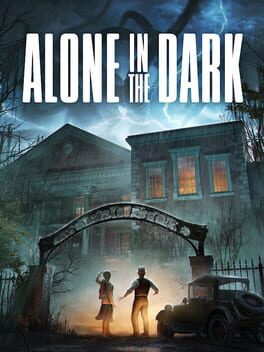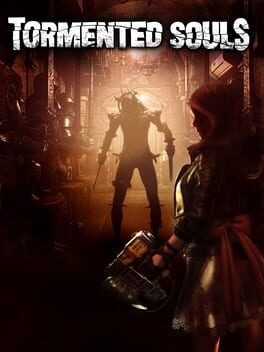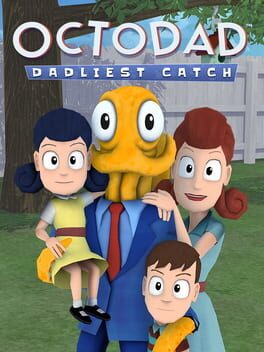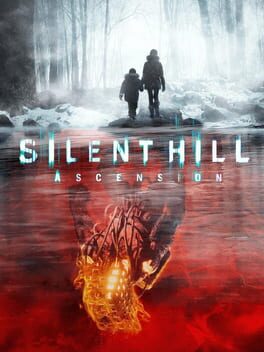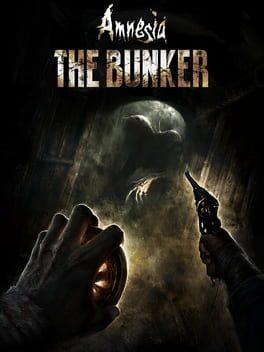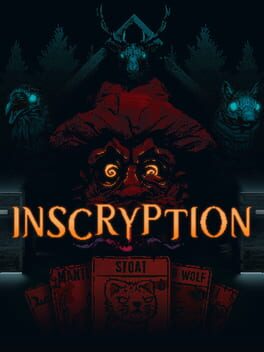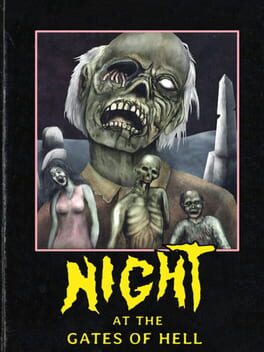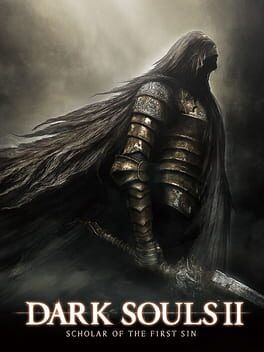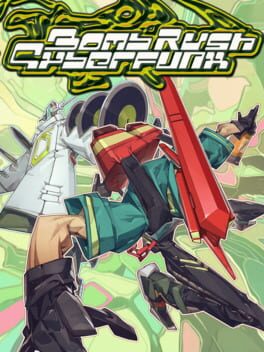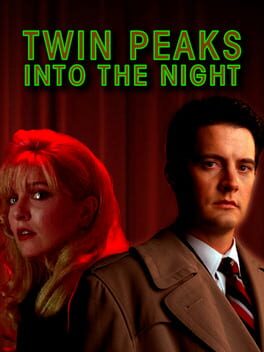2024
While the first Alone In The Dark was considered the pioneer of “survival horror” (not counting the top-down proto-horror adventure title Sweet Home), the term was actually coined by Resident Evil four years later. Almost 30 years on, RE has maintained its overruling of the genre: RE4, RE7 and RE2R, have each steered almost all other horror titles in terms of camera style, gameplay, puzzles and combat. Most of the big hitters of recent years, Alan Wake II, Dead Space and, let’s be real, probably the Silent Hill 2 remake, all aspire towards the success of Resident Evil 2 remake. It’s kind-of a shame then, that this ‘reimagining’ of the true pioneer of survival horror remains firmly on the pile of indistinguishable over-the-shoulder monster shooters under RE’s umbrella (intentional reference).
That said, it’d be unfair to overlook this new title’s rich atmosphere and uniquely swampy 1930s Louisiana setting. Unlocking and exploring various areas of the reimagined Derceto Mansion is always good fun. The star power of David Harbour and Jodie Comer… well they don’t add a great deal, the acting throughout is appropriately weird - the characters are quite cartoonish in a way that suits the campy eccentricity of the franchise.
But unfortunately, Alone In the Dark’s remake fails to thrive in any unique areas of its own. And sadly, it barely manages with the simpler things: the combat is functional, but ultimately bland; the puzzles are offensively juvenile; I like some of the swampier monsters, but most of them are uninspired, including a very dull final boss.
Still, it scratches that all-annoying survival horror itch - if you’ve played all the big hitters, this one serves as a decent b-tier entry that just manages to scrape by, albeit as an uninspired imitator of classics that came before it.
That said, it’d be unfair to overlook this new title’s rich atmosphere and uniquely swampy 1930s Louisiana setting. Unlocking and exploring various areas of the reimagined Derceto Mansion is always good fun. The star power of David Harbour and Jodie Comer… well they don’t add a great deal, the acting throughout is appropriately weird - the characters are quite cartoonish in a way that suits the campy eccentricity of the franchise.
But unfortunately, Alone In the Dark’s remake fails to thrive in any unique areas of its own. And sadly, it barely manages with the simpler things: the combat is functional, but ultimately bland; the puzzles are offensively juvenile; I like some of the swampier monsters, but most of them are uninspired, including a very dull final boss.
Still, it scratches that all-annoying survival horror itch - if you’ve played all the big hitters, this one serves as a decent b-tier entry that just manages to scrape by, albeit as an uninspired imitator of classics that came before it.
2021
It’s fair to say a good portion of the survival horror fandom still yearn for the halcyon days of fixed-camera classics - I don’t need to mention which ones. And there’s plenty of recent homages to just that: Song of Horror, Alisa, Murder House, Dawn of Fear, The Medium, Post Trauma, etc. Tormented Souls, with a story as generic as its title, is neither the best nor worst of them.
In its favour, the fixed camera gameplay and combat are pretty solid, appropriately challenging in moments of confinement with a monstrosity trying to tear you up. My hottest take is that Tormented Souls boasts some of the strongest puzzles we’ve seen in horror gaming for a long time: some puzzles are the standard ‘find a thing that wouldn’t normally combine with this other thing but somehow combines anyway and does something cool’ type thing and others involve hopping into alternate mirror dimensions and even a bit of time travel to alter the state of the real world. The sound design is also rather accomplished, evoking the oppressive soundscapes of the first Silent Hill game. The score is good and, while not always perfect, can be unsettling - the music that plays when the ‘stalker’ monster is near had me spinning around and immediately running back.
My only gripe, beyond the voice acting that leaves a lot to be desired, is the aesthetic coherence: while I appreciated the cluttered ‘lived-in’ design of the setting, it’s sort of ugly? Maybe this is just my personal preference as a purist for Silent Hill’s stripped back design where emptiness creates ambiguity and unease, but this place leans into the curious over-design of a steampunk fantasy world. Or is it just me? In other words, this game, which somehow gets away with placing some of the all-time classic disturbing paintings (The Nightmare, Judith Beheading Holofernes, etc) in its world, does not manage to conjure any unique visceral horror of its own.
Lots of strong elements but there’s certainly room for improvement. And if there’s any lesson Tormented Souls’ upcoming sequel should learn, it’s that homage can only get you so far.
In its favour, the fixed camera gameplay and combat are pretty solid, appropriately challenging in moments of confinement with a monstrosity trying to tear you up. My hottest take is that Tormented Souls boasts some of the strongest puzzles we’ve seen in horror gaming for a long time: some puzzles are the standard ‘find a thing that wouldn’t normally combine with this other thing but somehow combines anyway and does something cool’ type thing and others involve hopping into alternate mirror dimensions and even a bit of time travel to alter the state of the real world. The sound design is also rather accomplished, evoking the oppressive soundscapes of the first Silent Hill game. The score is good and, while not always perfect, can be unsettling - the music that plays when the ‘stalker’ monster is near had me spinning around and immediately running back.
My only gripe, beyond the voice acting that leaves a lot to be desired, is the aesthetic coherence: while I appreciated the cluttered ‘lived-in’ design of the setting, it’s sort of ugly? Maybe this is just my personal preference as a purist for Silent Hill’s stripped back design where emptiness creates ambiguity and unease, but this place leans into the curious over-design of a steampunk fantasy world. Or is it just me? In other words, this game, which somehow gets away with placing some of the all-time classic disturbing paintings (The Nightmare, Judith Beheading Holofernes, etc) in its world, does not manage to conjure any unique visceral horror of its own.
Lots of strong elements but there’s certainly room for improvement. And if there’s any lesson Tormented Souls’ upcoming sequel should learn, it’s that homage can only get you so far.
It was hard to have high expectations of a free Silent Hill game put out by Konami after their numerous gaming crimes - losing Kojima, cashing in on pachinko, Ascension, to name a few - but Silent Hill: The Short Message, a game about grief, suicide and abuse, is WAY better than it has any right to be.
I will admit that the game pinches from P.T and a little Serial Experiments Lain, with a trashy J-emo script that has all the subtlety of.. well, a corridor covered in abusive post-it notes. But I don't hate that, I vibe with it. Sure, I think it could've benefited from being in its native Japanese language rather than English, let alone even the illusion of being set in bloody Germany, as some of the bullying language feels cliche. But the handling of the heavy themes and conclusion it reaches about the victims have a strong emotional impact, and, I must add, a much healthier take than Bloober's offensive The Medium.
But now for the game's main strengths. The boys are back! Akira Yamaoka's score is understated but stirring, the sound design creepy and enhancing the presence of Masahiro Ito's menacing new monster that hobbles after you down corridors with a stop-motion jitteriness. The pursuit sections are reminiscent of Shattered Memories but much more effective, claustrophobic and panic-inducing - they can be difficult and sometimes frustrating but get by on their short length. There’s not a great deal else in terms of gameplay beyond wandering a dilapidated apartment block, but the grimy design and atmosphere are enough to enjoy just moving through the eerie space, uncovering the story in various gameplay ‘loops.’
Of course, it can veer into amateur territory - the drawings are tad too Tumblr, the acting is mostly strong but occasionally a bit off, those sections in school corridors are a bit too 2013 for my liking - but I suppose the game is not made by a bunch of Kojimas.
However, for the first effort in a couple decades from a Konami-led Japanese team, it’s a rather satisfying return to form for Silent Hill. It’s not perfect, but it didn’t need to be, especially not when it had Ascension’s act to follow.
I will admit that the game pinches from P.T and a little Serial Experiments Lain, with a trashy J-emo script that has all the subtlety of.. well, a corridor covered in abusive post-it notes. But I don't hate that, I vibe with it. Sure, I think it could've benefited from being in its native Japanese language rather than English, let alone even the illusion of being set in bloody Germany, as some of the bullying language feels cliche. But the handling of the heavy themes and conclusion it reaches about the victims have a strong emotional impact, and, I must add, a much healthier take than Bloober's offensive The Medium.
But now for the game's main strengths. The boys are back! Akira Yamaoka's score is understated but stirring, the sound design creepy and enhancing the presence of Masahiro Ito's menacing new monster that hobbles after you down corridors with a stop-motion jitteriness. The pursuit sections are reminiscent of Shattered Memories but much more effective, claustrophobic and panic-inducing - they can be difficult and sometimes frustrating but get by on their short length. There’s not a great deal else in terms of gameplay beyond wandering a dilapidated apartment block, but the grimy design and atmosphere are enough to enjoy just moving through the eerie space, uncovering the story in various gameplay ‘loops.’
Of course, it can veer into amateur territory - the drawings are tad too Tumblr, the acting is mostly strong but occasionally a bit off, those sections in school corridors are a bit too 2013 for my liking - but I suppose the game is not made by a bunch of Kojimas.
However, for the first effort in a couple decades from a Konami-led Japanese team, it’s a rather satisfying return to form for Silent Hill. It’s not perfect, but it didn’t need to be, especially not when it had Ascension’s act to follow.
Despite Insomniac using all their technology to make Peter Parker’s face more punchable than ever, Spider-Man 2 still ranks alongside the movie Spider-Man 2 and its tie-in game Spider-Man 2 as one of the most enjoyable pieces of Spider-Man 2 media, improving on the already solid gameplay of its predecessor.
The web slinging is essentially that of the said 2004 tie-in game (if it ain’t broke…etc) but has never felt better on these buzzing haptic controllers - you can feel the weight of each swing. And as if that wasn’t good enough, the game introduces ‘web wings’ that add even more speed and satisfaction to soaring around the massive city. New York has never looked better: the streets and squares feel like they’re bustling with life, highlighted by some neat little photo missions - otherwise it’s easy to miss it all when you’re zooming over rooftops.
I enjoyed the collectibles and side-quests, and even just swinging about aimlessly, so much so that I put off main story missions until they were the last thing to do. In terms of the main campaign, I wasn’t completely averse to playing the novelty MJ or Hailey segments, but the more mundane walking/talking segments could be a bit of a slog, they seemed to exist simply to pace out the build-up to the next actual exciting thing. The boss battles generally had some great set-pieces - lots of trippy Spider-verse-jumping in and out of people’s minds and dimensions like Psychonauts or something - but repetitive in terms of the combat. Despite the variety in combat between the two web-slingers, the boss fights are usually dragged out with health bars replenishing for no reason beyond mere padding.
The story is good fun, has a couple of good dark twists and fun surprises, and while it’s Peter Parker focused, there’s some great moments for Miles too. Kraven is a terrific villain, although somewhat played down a bit for the (SPOILERS) doomy Venom stuff towards the end.
It’s pretty much the first game(s) but bigger, but, even with it’s flaws, Spider-Man 2 is not only the best Spider-Man for the console but probably an essential PS5 game to own, even if just to fall back on for some casual swinging between other, more demanding games.
The web slinging is essentially that of the said 2004 tie-in game (if it ain’t broke…etc) but has never felt better on these buzzing haptic controllers - you can feel the weight of each swing. And as if that wasn’t good enough, the game introduces ‘web wings’ that add even more speed and satisfaction to soaring around the massive city. New York has never looked better: the streets and squares feel like they’re bustling with life, highlighted by some neat little photo missions - otherwise it’s easy to miss it all when you’re zooming over rooftops.
I enjoyed the collectibles and side-quests, and even just swinging about aimlessly, so much so that I put off main story missions until they were the last thing to do. In terms of the main campaign, I wasn’t completely averse to playing the novelty MJ or Hailey segments, but the more mundane walking/talking segments could be a bit of a slog, they seemed to exist simply to pace out the build-up to the next actual exciting thing. The boss battles generally had some great set-pieces - lots of trippy Spider-verse-jumping in and out of people’s minds and dimensions like Psychonauts or something - but repetitive in terms of the combat. Despite the variety in combat between the two web-slingers, the boss fights are usually dragged out with health bars replenishing for no reason beyond mere padding.
The story is good fun, has a couple of good dark twists and fun surprises, and while it’s Peter Parker focused, there’s some great moments for Miles too. Kraven is a terrific villain, although somewhat played down a bit for the (SPOILERS) doomy Venom stuff towards the end.
It’s pretty much the first game(s) but bigger, but, even with it’s flaws, Spider-Man 2 is not only the best Spider-Man for the console but probably an essential PS5 game to own, even if just to fall back on for some casual swinging between other, more demanding games.
2023
Alan Wake II is a prime example of how taking a big fucking swing can really pay off.
Its 13-year-old predecessor was met with a mixed reception (strong atmosphere; naff characters and combat) and sadly failed to get its intended sequel made at the time. But, despite my dislike of that first game, it was heartwarming to see, at last, Sam Lake championing Alan Wake II, all the way to the recent Game Awards.
Even from that first teaser trailer, it was clear Remedy was doubling down, putting everything they had into this. The result is a culmination of ideas born from their prior games, including Quantum Break and Control, notably the seamless blend of gameplay and live action footage.
And if Twin Peaks was a key inspiration for the first game, the second is very much its own Twin Peaks: The Return - crazier, scarier, and richer from its many years in the metaphorical slow-cooker - even the plot (SPOILER ALERT) is very much The Return: new characters piece together past and present events in order to bring back the absent hero trapped in the Black Lodge/Dark Place.
This Return segment focuses on player character FBI agent Saga Anderson, investigating cult ritual murders in different areas of Bright Falls, using a ‘mind palace’ system to organise jigsaw pieces of the case, profile suspects and keep count of how many wall-mounted deer heads she’s caressed. I found these detective segments so enjoyable that the later levels as Alan, wandering around his mind (in a form of Otherworldly New York Plaza), were underwhelming by comparison. There are some game highlights in playing the title character, such as a spooky hotel and a movie theatre; and who could forget the Herald of Darkness musical segment?! But Saga’s… saga moves the story forward at a more engaging pace.
The combat indeed feels weightier but no less annoying for the most part. The enemies that can speed-dodge attacks are a nightmare to pinpoint in darker areas where they hide and throw stuff at you. I also found it frustrating when circling back to areas to find hidden items, only to constantly have enemies respawn for the same annoying fight on lower ammo. There are a couple of horde-based enemy sequences, similar to the first game, which also border on tedium. All of that said, most of the boss levels still manage to be quite tense.
All the stuff with the fictional Old Gods of Asgard band, the Alex Casey movie segments and Wake’s usual bullshit writing can be campy and indulgent as expected, but Sam Lake gets away with it, this time, by having the rest of the game be just as bold and bombastic. Its heightened visuals - notably those live action ’monochrome visions’ and the dark murmuring figures aberrating in and out of the moody environment - make every moment unpredictable.
Lastly, Alan Wake II couldn’t have come at a better time. With a piss-poor opening to an uncertain Silent Hill revival that is Ascension, and (rather fantastic) remakes such as Dead Space and RE4, this year of survival horror was very nearly dismissed as a nostalgia wave for older classics, plus maybe some indie outliers. With a sequel that is far better than anyone could’ve expected, Remedy breathed new life into the genre, showcasing a whole new horizon of potential, graphically, narratively and stylistically.
Its 13-year-old predecessor was met with a mixed reception (strong atmosphere; naff characters and combat) and sadly failed to get its intended sequel made at the time. But, despite my dislike of that first game, it was heartwarming to see, at last, Sam Lake championing Alan Wake II, all the way to the recent Game Awards.
Even from that first teaser trailer, it was clear Remedy was doubling down, putting everything they had into this. The result is a culmination of ideas born from their prior games, including Quantum Break and Control, notably the seamless blend of gameplay and live action footage.
And if Twin Peaks was a key inspiration for the first game, the second is very much its own Twin Peaks: The Return - crazier, scarier, and richer from its many years in the metaphorical slow-cooker - even the plot (SPOILER ALERT) is very much The Return: new characters piece together past and present events in order to bring back the absent hero trapped in the Black Lodge/Dark Place.
This Return segment focuses on player character FBI agent Saga Anderson, investigating cult ritual murders in different areas of Bright Falls, using a ‘mind palace’ system to organise jigsaw pieces of the case, profile suspects and keep count of how many wall-mounted deer heads she’s caressed. I found these detective segments so enjoyable that the later levels as Alan, wandering around his mind (in a form of Otherworldly New York Plaza), were underwhelming by comparison. There are some game highlights in playing the title character, such as a spooky hotel and a movie theatre; and who could forget the Herald of Darkness musical segment?! But Saga’s… saga moves the story forward at a more engaging pace.
The combat indeed feels weightier but no less annoying for the most part. The enemies that can speed-dodge attacks are a nightmare to pinpoint in darker areas where they hide and throw stuff at you. I also found it frustrating when circling back to areas to find hidden items, only to constantly have enemies respawn for the same annoying fight on lower ammo. There are a couple of horde-based enemy sequences, similar to the first game, which also border on tedium. All of that said, most of the boss levels still manage to be quite tense.
All the stuff with the fictional Old Gods of Asgard band, the Alex Casey movie segments and Wake’s usual bullshit writing can be campy and indulgent as expected, but Sam Lake gets away with it, this time, by having the rest of the game be just as bold and bombastic. Its heightened visuals - notably those live action ’monochrome visions’ and the dark murmuring figures aberrating in and out of the moody environment - make every moment unpredictable.
Lastly, Alan Wake II couldn’t have come at a better time. With a piss-poor opening to an uncertain Silent Hill revival that is Ascension, and (rather fantastic) remakes such as Dead Space and RE4, this year of survival horror was very nearly dismissed as a nostalgia wave for older classics, plus maybe some indie outliers. With a sequel that is far better than anyone could’ve expected, Remedy breathed new life into the genre, showcasing a whole new horizon of potential, graphically, narratively and stylistically.
An upsetting start for Konami’s quantity-over-quality approach to their Silent Hill revival.
I won’t reiterate what’s already been said about the intrusive monetisation system, mind-numbing ‘puzzles’ and choppy animation. I will say the idea of a community based Telltale experience can work on other IP - The Walking Dead is kind-of all about group decisions leading to drastic consequences - but the true essence of Silent Hill is loneliness and isolation.
Granted, PT was, in some ways, community driven in its obtuse puzzles, but the experience was undoubtedly best played alone in the dark. Unlike PT, Ascension is simply not scary, at least in the way we want it to be! It is instead riddled with narrative cliches, dull characters and ineptly written dialogue. That said, even the best Silent Hill games overcome some of these aspects through animation alone. Take the limited expressions of James or Angela from SH2 for instance: so much of the emotion behind their scenes are conveyed through choice of character movement, camera angles and editing. Sure, Ascension has the daunting task of churning out 16 weeks (?!) worth of content and won’t have Kojima’s budget or tools for facial animation, but there are no excuses behind the consistently uninspired direction where most characters just stand and deliver clunky lines at a flat camera angle.
I could understand something like this going fine and maybe even unnoticed alongside the release of both the SH2 Remake and the movie, but starting the revival of a decade-dormant franchise with Silent Hill: Ascension casts a looming shadow of uncertainty over releases to come. We can only hope the worst is behind us.
I won’t reiterate what’s already been said about the intrusive monetisation system, mind-numbing ‘puzzles’ and choppy animation. I will say the idea of a community based Telltale experience can work on other IP - The Walking Dead is kind-of all about group decisions leading to drastic consequences - but the true essence of Silent Hill is loneliness and isolation.
Granted, PT was, in some ways, community driven in its obtuse puzzles, but the experience was undoubtedly best played alone in the dark. Unlike PT, Ascension is simply not scary, at least in the way we want it to be! It is instead riddled with narrative cliches, dull characters and ineptly written dialogue. That said, even the best Silent Hill games overcome some of these aspects through animation alone. Take the limited expressions of James or Angela from SH2 for instance: so much of the emotion behind their scenes are conveyed through choice of character movement, camera angles and editing. Sure, Ascension has the daunting task of churning out 16 weeks (?!) worth of content and won’t have Kojima’s budget or tools for facial animation, but there are no excuses behind the consistently uninspired direction where most characters just stand and deliver clunky lines at a flat camera angle.
I could understand something like this going fine and maybe even unnoticed alongside the release of both the SH2 Remake and the movie, but starting the revival of a decade-dormant franchise with Silent Hill: Ascension casts a looming shadow of uncertainty over releases to come. We can only hope the worst is behind us.
2023
The Unreal Engine 5 asset flips all look nice, but Stray Souls lacks the personality and authorship to justify any such shortcuts.
The story is derivative; the acting is naff; the random face animation of our hero Daniel makes him seem like he is constantly holding in a shit; the levels are so disjointed it's clear they were designed well before a sense of connecting narrative was established; the dull combat lacks any weight and the monsters feel not only irrelevant to what's going on but also inconsistent to one another (some look like zombies, some are Dead Space esque, one of them is a big yeti or something); the dialogue and sound are poorly mixed. Have I missed anything? Probably!
I wouldn't have minded any of the game's budget jankiness if it had just a little personality. Cry of Fear is a terrific example of breathing new life into what already exists and creating a game unique and interesting and also actually scary.
The story is derivative; the acting is naff; the random face animation of our hero Daniel makes him seem like he is constantly holding in a shit; the levels are so disjointed it's clear they were designed well before a sense of connecting narrative was established; the dull combat lacks any weight and the monsters feel not only irrelevant to what's going on but also inconsistent to one another (some look like zombies, some are Dead Space esque, one of them is a big yeti or something); the dialogue and sound are poorly mixed. Have I missed anything? Probably!
I wouldn't have minded any of the game's budget jankiness if it had just a little personality. Cry of Fear is a terrific example of breathing new life into what already exists and creating a game unique and interesting and also actually scary.
It’s a nice bonus that the intricate and politically charged murder mystery plot is as thoroughly intriguing as it is; but for you, the protagonist of Disco Elysium, the main villain is yourself, specifically your (Ancient Reptilian) brain.
It’s an RPG in which the biggest obstacles can be just not saying the stupidest thing to a suspect, done through chance-based engagement with corners of your mind - logic, empathy, authority, volition, ‘inland empire’ (one of many Lynchian influences throughout) and many more.
Alongside the gorgeous painterly art style, the game’s key strength is its impeccable writing: the funny parts are funny, the narrator’s vivid descriptions are stirring, the characters and relationships feel incredibly real. It’s a game for people who love a really really really good book. Fuck it, Disco Elysium is literature.
Lastly, it’s just a gripping detective game in which piecing information together bares deeply satisfying results, and taking risks are, more often than not, met with rewards. A must play.
It’s an RPG in which the biggest obstacles can be just not saying the stupidest thing to a suspect, done through chance-based engagement with corners of your mind - logic, empathy, authority, volition, ‘inland empire’ (one of many Lynchian influences throughout) and many more.
Alongside the gorgeous painterly art style, the game’s key strength is its impeccable writing: the funny parts are funny, the narrator’s vivid descriptions are stirring, the characters and relationships feel incredibly real. It’s a game for people who love a really really really good book. Fuck it, Disco Elysium is literature.
Lastly, it’s just a gripping detective game in which piecing information together bares deeply satisfying results, and taking risks are, more often than not, met with rewards. A must play.
2023
Amnesia has practically become a sub-genre of survival horror unto itself, its tropes consisting of the Lovecraftian entities that stalk in the shadows, a trapped, defenceless protagonist and also having the worst light sources known to man. The third entry in the iconic franchise, entitled Rebirth, was a demonstration of formula’s flexibility within a complete change of scenery, some of which taking place in broad daylight. The Bunker still manages to bring plenty of new features to the table whilst remaining, undoubtedly, an Amnesia game.
This one, set during WWI, follows a French soldier, Henri Clément, trapped in the titular bunker filled with corpses of fellow soldiers and a lurking Beast responsible for said corpses. Much of the horror comes from stumbling around in the dark looking for key items that will help you escape, while the Beast pursues you from inside the walls. As with the other games, several aspects add to the stress: there’s no sanity meter when you’re plunged into darkness, but once the generator runs out of fuel and the lights go out, it’s only a matter of time before the monster comes after you; likewise there’s no scarcity of light sources like before, but your shitty wind-up torch is noisy and puts you at risk. Generally, sound is put to effective use and is key to survival, especially in how the directional sound of the monster can indicate where it might pop up next.
The semi-open world of the bunker demands that the player explores each area at a time, returning with new supplies as frequently as possible and really considering ventures out of the safe room. It’s satisfying when a well-planned trip rewards you with game changing items - such as a wrench or bolt cutters - that allow you to venture further into areas previously unreachable. Similarly, there’s nothing more wonderful than coming up with your own unique solutions to navigating the environment - not every locked door needs a key.
I would say these new mechanics make The Bunker the most fun Amnesia game to play, although the unrelenting persistence of the Beast, whilst scary and stressful at first, can sometimes just be annoying - think the Xenomorph from Alien Isolation. The addition of weapons is indeed exciting but quickly becomes futile (or at least when only used to fend off the creature). The running back and forth to escape the monster helps to pad out what is probably way too short of a game. And the notion of replaying it all with randomised key-item locations doesn’t seem that appealing, especially considering the lack of variation in the ending(s). Still, it’s a hell of a first playthrough!
Small gripes aside, The Bunker is still one of the strongest horror titles of the year thus far. If it proves anything, it’s that Amnesia still holds a firm place in the genre, and I hope Frictional Games continue explore new and exciting ground with it.
This one, set during WWI, follows a French soldier, Henri Clément, trapped in the titular bunker filled with corpses of fellow soldiers and a lurking Beast responsible for said corpses. Much of the horror comes from stumbling around in the dark looking for key items that will help you escape, while the Beast pursues you from inside the walls. As with the other games, several aspects add to the stress: there’s no sanity meter when you’re plunged into darkness, but once the generator runs out of fuel and the lights go out, it’s only a matter of time before the monster comes after you; likewise there’s no scarcity of light sources like before, but your shitty wind-up torch is noisy and puts you at risk. Generally, sound is put to effective use and is key to survival, especially in how the directional sound of the monster can indicate where it might pop up next.
The semi-open world of the bunker demands that the player explores each area at a time, returning with new supplies as frequently as possible and really considering ventures out of the safe room. It’s satisfying when a well-planned trip rewards you with game changing items - such as a wrench or bolt cutters - that allow you to venture further into areas previously unreachable. Similarly, there’s nothing more wonderful than coming up with your own unique solutions to navigating the environment - not every locked door needs a key.
I would say these new mechanics make The Bunker the most fun Amnesia game to play, although the unrelenting persistence of the Beast, whilst scary and stressful at first, can sometimes just be annoying - think the Xenomorph from Alien Isolation. The addition of weapons is indeed exciting but quickly becomes futile (or at least when only used to fend off the creature). The running back and forth to escape the monster helps to pad out what is probably way too short of a game. And the notion of replaying it all with randomised key-item locations doesn’t seem that appealing, especially considering the lack of variation in the ending(s). Still, it’s a hell of a first playthrough!
Small gripes aside, The Bunker is still one of the strongest horror titles of the year thus far. If it proves anything, it’s that Amnesia still holds a firm place in the genre, and I hope Frictional Games continue explore new and exciting ground with it.
2021
Right from the off, Inscryption is just a wonderful card game. The folk-horror cabin ‘escape room’ and enigmatic card sacrificing gameplay are just impeccable vibes. [Slight spoilers ahead]: I think the reason the meta stuff that follows works is because the core card gameplay remains relatively consistent, alongside the brilliantly elusive scrybe characters that drive the story. I must admit the opening is the highlight for me, but I enjoyed the deviation into Marble Hornets / creepypasta territory, as well as uncovering PT levels of buried secrets that encourage another playthrough or two.
If you told teenage me that there existed a lo-fi zombie survival shooter inspired by video nasty era Lucio Fulci movies I would’ve laughed you out of my little video dungeon bedroom that I spent my youth in. Nowadays, with an indie market saturated by Puppet Combo’s distinct, much imitated brand of horror games, it’s hardly a surprise.
Still, it’s a delight basking in the bleak, jagged world of Night at the Gates of Hell. The gameplay isn’t anything fancy, but I found the zombie shooting most satisfying, perhaps more so than in a number of RE games: the way the zombies move - slow, creeping but firmly towards the player - creates tension, and being able to pop them in the head with a single skull-splattering shot is deeply satisfying. Much in the spirit of Fulci’s movies The Beyond, The House by the Cemetery and City of the Living Dead, the zombies look unrealistic and rather abstract, but freaky in their own way, with bulging eyes and monstrous grins.
I found much of Jordan King’s penchant for trashy, irreverent comedy relief less suited to the atmosphere here than in his previous game, The Booty Creek Cheek Freak which feels like a joyous South Park parody against its contemporaries. Likewise, the plot is as nonsensical and thinly sketched as you’d expect from any Italian-American schlock horror picture of the late 70s, but the ending still feels a little cold (an enjoyable final image nevertheless).
Generally, Gates is inconsistent, but a fuller experience than Bloodwash and Cheek Freak. It peaks early with the apartment and coastal village segments, but there’s plenty to enjoy, perhaps more for the movie buffs strangely enough.
Still, it’s a delight basking in the bleak, jagged world of Night at the Gates of Hell. The gameplay isn’t anything fancy, but I found the zombie shooting most satisfying, perhaps more so than in a number of RE games: the way the zombies move - slow, creeping but firmly towards the player - creates tension, and being able to pop them in the head with a single skull-splattering shot is deeply satisfying. Much in the spirit of Fulci’s movies The Beyond, The House by the Cemetery and City of the Living Dead, the zombies look unrealistic and rather abstract, but freaky in their own way, with bulging eyes and monstrous grins.
I found much of Jordan King’s penchant for trashy, irreverent comedy relief less suited to the atmosphere here than in his previous game, The Booty Creek Cheek Freak which feels like a joyous South Park parody against its contemporaries. Likewise, the plot is as nonsensical and thinly sketched as you’d expect from any Italian-American schlock horror picture of the late 70s, but the ending still feels a little cold (an enjoyable final image nevertheless).
Generally, Gates is inconsistent, but a fuller experience than Bloodwash and Cheek Freak. It peaks early with the apartment and coastal village segments, but there’s plenty to enjoy, perhaps more for the movie buffs strangely enough.
Only took me 2 years but woop woop I finished this gruelling behemoth.
Dark Souls II feels undoubtedly the bleakest of the Souls games, with bigger portions of dull, decrepit ruins and crestfallen NPCs. Its lore and narrative are equally as dense and simultaneously unimportant to the gameplay - sure it wasn't a speedrun, but by the time my conquest - of blood, sweat and tears grinding boss after boss, rows and rows of soldiers and monsters that murdered me over and over - by the time all that started coming to a close, I had, all but drained of awe and wonder, forgotten what I was even fighting for. In all fairness, that could be in the best spirit of the Souls-genre, maybe Dark Souls II is thus the most Dark Souls game of them all. Nevertheless it's certainly the most frustrating.
Incoherent rambling aside, it's hard to ignore plentiful moments of beauty and intrigue, notably the memories of the Giants, the nightmarish Black Gulch, the sparkly Shrine of Amana, Majula (vibes), that scorpion chick, the list goes on.
For the most part, it can be as exhilarating as it is frustrating, and is still a first class game, despite the lack of Miyazaki's magic touch. It's certainly FromSoftware's black sheep. In fact, sheep don't get much blacker than this, otherwise they would probably feature as a boss.
Dark Souls II feels undoubtedly the bleakest of the Souls games, with bigger portions of dull, decrepit ruins and crestfallen NPCs. Its lore and narrative are equally as dense and simultaneously unimportant to the gameplay - sure it wasn't a speedrun, but by the time my conquest - of blood, sweat and tears grinding boss after boss, rows and rows of soldiers and monsters that murdered me over and over - by the time all that started coming to a close, I had, all but drained of awe and wonder, forgotten what I was even fighting for. In all fairness, that could be in the best spirit of the Souls-genre, maybe Dark Souls II is thus the most Dark Souls game of them all. Nevertheless it's certainly the most frustrating.
Incoherent rambling aside, it's hard to ignore plentiful moments of beauty and intrigue, notably the memories of the Giants, the nightmarish Black Gulch, the sparkly Shrine of Amana, Majula (vibes), that scorpion chick, the list goes on.
For the most part, it can be as exhilarating as it is frustrating, and is still a first class game, despite the lack of Miyazaki's magic touch. It's certainly FromSoftware's black sheep. In fact, sheep don't get much blacker than this, otherwise they would probably feature as a boss.
2023
